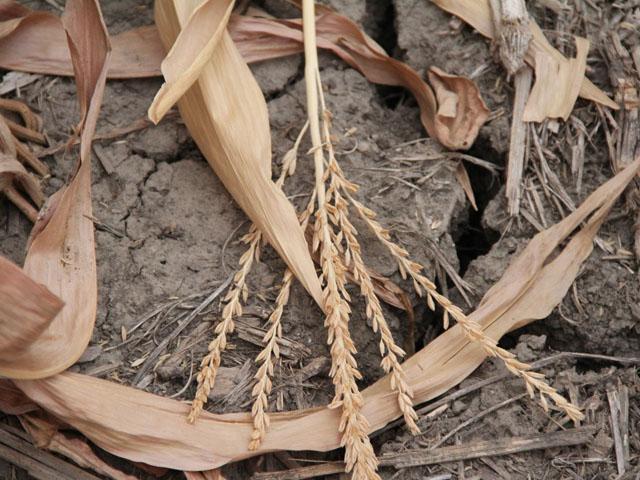Read Soil Tests With Caution This Year
Dry Conditions Can Throw P, K, PH Sampling Results Out of Whack
JEFFERSON CITY, Mo. (DTN) -- Producers whose crops experienced dry or droughty conditions from the late season through harvest should review their soil test results with a critical eye this fall.
Below-normal rainfall can influence nutrient cycling, leading to lower-than-expected results for phosphorus, potassium and pH, said Antonio Mallarino, a professor of agronomy and nutrient management at Iowa State University.
"Farmers need to be aware, especially those who are sampling right behind the combine," Mallarino said in an interview with DTN. "If they have not had any rain since late August and they sample, those soil test results may indicate they need to apply more P&K than really is required or add lime to a field when it's not needed."
DTN Ag Meteorologist John Baranick said that during the past 90 days, most of North America -- from the Pacific Northwest and Canadian Prairies through the Corn Belt and down into the Southeast -- has experienced below-average precipitation.
"Some areas of the eastern Midwest saw some good rain, including some portions of Illinois, but for most, the dryness has been widespread," Baranick said. "Everywhere west of the Mississippi was very dry since late July."
Normal rainfall leaches nutrients back into the soil while plants mature and from crop residue after harvest. While yield is not likely to be affected when Mother Nature turns off the tap after a crop begins to mature, the lack of rainfall can greatly reduce the amount of both potassium and phosphorus that are recycled from plant material back into the soil, Mallarino said.
"Plants are like pumps taking up potassium and phosphorus from plant-available soil pools," he explained. "When the soil is dry, it's like the reactions between those pools of nutrients are frozen, and the available pool cannot be replenished from less available forms."
P[L1] D[0x0] M[300x250] OOP[F] ADUNIT[] T[]
Because potassium in plant tissues is water soluble, it recycles earlier and faster than phosphorus, which is mostly organic. It also means that in soil test results, potassium deficiencies as indicated by soil tests may be more exaggerated than phosphorus deficiencies.
Dry conditions also can affect a soil's pH level, making it more acidic. Mallarino said that the difference could be as much as 0.5 pH units, though 0.1 to 0.4 pH units is more common.
"If they analyze pH and it's a half-unit more acidic than what's optimum for corn and soybeans, they may decide to lime when they really don't have to," he said.
Less rainfall also can result in higher nitrate levels, but Mallarino said a large reduction in fall- or early spring-applied nitrogen is not recommended, as a large amount of nitrate can leach out from the soil with normal or excessive rainfall during late fall or spring.
The extent to which these drought-induced soil test effects occur does depend on the soil type. Mallarino said finer texture soils such as clay loams and silty clay loams are more likely to exhibit the variations than more coarse, sandy soils.
Ideally, soil testing should be delayed until a field receives enough precipitation to wet the soil throughout the sampling depth. In most states, the recommended depth is 6 inches, Mallarino said.
If samples must be collected during dry conditions, Mallarino said that maintaining consistent sampling depth is important, as is ensuring that the entire soil core is collected. "If it's really dry, that top inch can be almost powdery and easily lost," he added.
In addition, a sufficient number of cores should be collected, even when grid sampling. Mallarino said three or four cores just simply isn't enough, but that growers "need to take at least eight, 10, even 12 cores to account for small-scale variability. More samples are always better."
When growers receive their soil test results, they should compare them to previous years' results. If there's a discrepancy that doesn't make sense after taking crop removal rates into account, adjustments should be made.
"Fertilizer prices remain high, so these effects are especially important for farmers who are trying to be conservative in terms of fertilization," Mallarino said. "We are all in a hurry, but in this case, waiting on rain for soil testing may be the best decision for their investment."
More about interpreting soil test results during dry conditions can be found here: https://crops.extension.iastate.edu/….
The Iowa State University Extension Soil Fertility website offers more information on nutrient management: https://www.agronext.iastate.edu/….
Jason Jenkins can be reached at jason.jenkins@dtn.com
Follow him on Twitter @JasonJenkinsDTN
(c) Copyright 2022 DTN, LLC. All rights reserved.






